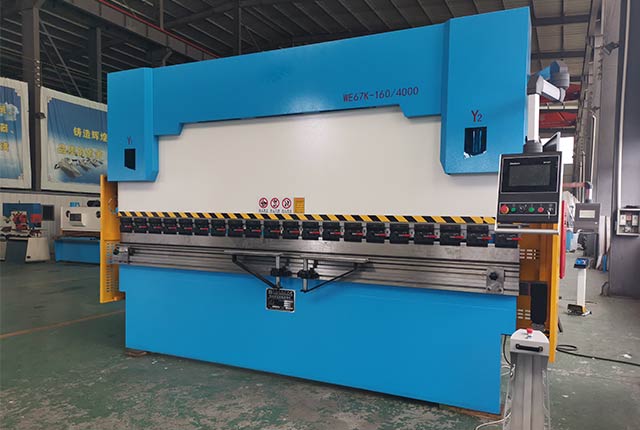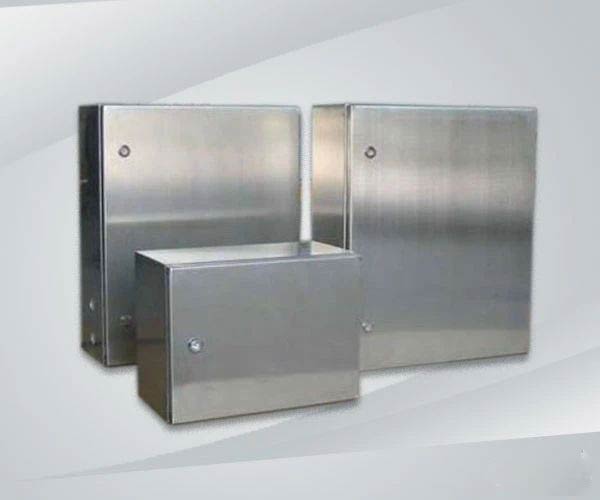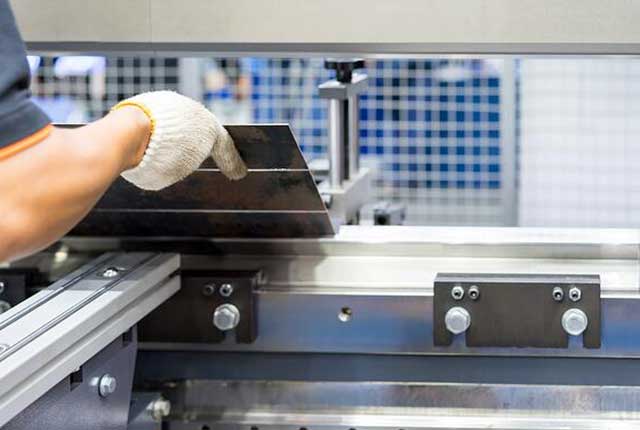WMT CNC Industrial Co., Ltd | All Rights Reserved.Design & Developed by VW Themes

Bending machine is a kind of machine for bending sheet metal, which is very common in industrial production. With the gradual development of modern industry, the user’s demand for bending machine is also gradually increasing, but with the increase of demand, there are some bending machines with uneven quality in the industry, and the quality of these machines also determines whether the future production process is smooth or not.
So how to choose the right quality bending machine? It’s best to carefully consider what model to buy from the end use of the machine, the possible deflection of the machine and the bending radius of the parts. When choosing the bending machine, as a decision maker, you also need to know the performance, processing range, processing function, processing accuracy of the machine in detail. The process of selection is very important, because if you choose improperly, your production cost will rise, and the bending machine can not recover the expected cost.
The first important thing to consider is that you want to produce parts. We should fully estimate the standard size, shape structure, etc. of the commodity parts you want to produce to make full accounting. The key point is to purchase a machine that can complete the processing task and the minimum number of tons of work table, so as to achieve practical and economical purposes. Consider sheet metal carefully and maximum machining thickness and length. If the main product material is low carbon steel, its thickness is within 3mm, and the maximum length is not more than 2500mm, then the free bending force does not need to be greater than 80t. But if there are a lot of pressing and bending in the process of operation, maybe we should consider buying a 150 ton bending machine. If the plate to be bent in production is low carbon steel, the thickest plate is 6 mm, and the length is 2500 mm, when bending freely, it is necessary to consider purchasing a bending machine of more than 100 tons. If bending needs to be corrected during bending, a larger tonnage bending machine is needed. If most of the bending parts are 1250mm or shorter, the tonnage of bending machine will be almost halved, which can greatly reduce the purchase cost. Therefore, the length of the processed parts is very important to determine the specifications of the machine.

Bending machine in bending process, especially bending long-size workpiece, will occur flexible deformation. The longer the workpiece, the greater the flexible deformation degree. Under the same load, the flexible deformation of 2500mm machine table and slide block is 4 times that of 1250mm machine.
That is to say, shorter machines need less gasket adjustment to produce qualified parts, and less gasket adjustment shortens the preparation time. But at present, most of the CNC hydraulic bending machines have increased the hydraulic deflection compensation function in the production design, which reduces the adjustment of the equipment by the production operator, and improves the bending accuracy and production efficiency. The hydraulic deflection compensation function is controlled by the numerical control system. The hydraulic oil enters the compensation cylinder through the magnetic servo valve to push the worktable upward. At the same time, the deflection compensation force increases with the increase of bending force, so as to play the role of deflection compensation.
The material quality of processed sheet is also a key factor. Compared with low carbon steel, the load of stainless steel usually needs to be increased by about 50%, while the load of soft aluminum is reduced by about 50%. The relevant standard bending pressure parameters can be obtained from the bending machine manufacturer. The table shows the bending force required for every 1000mm length under different thickness and different plate.
In the process of bending products, the bending angle radius of workpiece is also a factor to be considered. When free bending is used, the bending radius is 0.156 times of the opening size of V-groove. During free bending, the opening size of V-groove shall be 8 times the thickness of sheet metal.
For example, when bending 1.5mm low carbon steel with 12mm V groove opening size, the bending radius of the part is about R = 1.9mm. If the bending radius is close to or less than the thickness of the plate, it is necessary to carry out molding with bottom die. However, the pressure required for bottom bending is about four times greater than that for free bending. During free bending, pay attention to the gap between the upper die and the lower die at the end of the stroke, and use the compensation springback to make the plate keep about 90 ° excessive bending. Generally, the springback angle of the free bending die on the new bending machine is less than 2 ° and the bending radius is equal to 0.156 times of the opening of the lower die. Therefore, the bending angle of free upper and lower die is generally 86 ~ 90 degrees. At the bottom of the stroke, there should be a gap between the upper and lower dies which is slightly larger than the thickness of the plate.

The forming angle is improved because of the large tonnage of bottom pressing bending (about 4 times of free bending), which reduces the stress that usually causes springback within the bending radius. Imprint bending is the same as bottom pressing bending, except that the front end of the upper die is processed to the required bending radius, and the gap between the upper die and the lower die at the bottom of the stroke is less than the thickness of the plate.
Because enough pressure (about 10 times of the free bending) is applied to force the front end of the upper die to contact the plate, the springback is basically avoided. In order to select the lowest tonnage specification, it is better to plan for the bending radius greater than the thickness of the plate, and use free bending as far as possible. When the bending radius is large, the quality of the finished part and its future use are often not affected.
Bending accuracy is a factor that needs careful consideration. This factor determines whether you choose a CNC bending machine or an ordinary bending machine. The choice of bending machine involves the precision of mechanical system rigid index, because from a scientific point of view, the error is inevitable, can only reduce the error as far as possible. Some workpiece itself and some simple parts in a small range of errors are acceptable, then there is no need to pursue high-precision bending machine; and some workpieces must be high-precision, which requires high-precision bending machine, at this time we recommend you to buy digital bending machine.
If the bending accuracy requires ± 0.5 ° and can not be changed at will, you must focus on the CNC bending machine. Generally, the repeat precision of the slider of CNC bending machine can be ensured within ± 0.01mm, and such precision and high-quality die must be used for forming accurate angle. The repeat precision of the common bending machine slider is ± 0.5mm, and the deviation of ± 2 ~ 3 ° will still be produced under the condition of using suitable die. In addition, CNC bending machine is equipped with quick clamping and quick die changing system. When you need to bend many small parts, CNC bending machine is an indisputable choice.
Bending die will also directly affect the accuracy of bending, so we should often check the wear of the die by measuring the length from the front end of the upper die to the shoulder and the length from the lower die to the shoulder. For conventional dies, the deviation of every 10 mm should be about ± 0.01 mm, and the total length deviation should not be more than ± 0.15 mm. As for the precision grinding die, the precision of every 100 mm should be ± 0.005 mm, and the total precision should not be greater than ± 0.05 mm. It’s better to use fine grinding die for CNC bending machine, and conventional die for ordinary bending machine.
As a user or manufacturer of equipment, when purchasing a bending machine, the most important thing is to purchase an economical and practical bending machine. Of course, many factors should be taken into account, and at the same time, we should start from our own actual situation. The above points are just a brief overview of some one-sided problems. The best way is to choose a professional bending machine manufacturer and let them provide you with several alternative plans according to your actual situation, so as to make the decision more reasonable and effective.